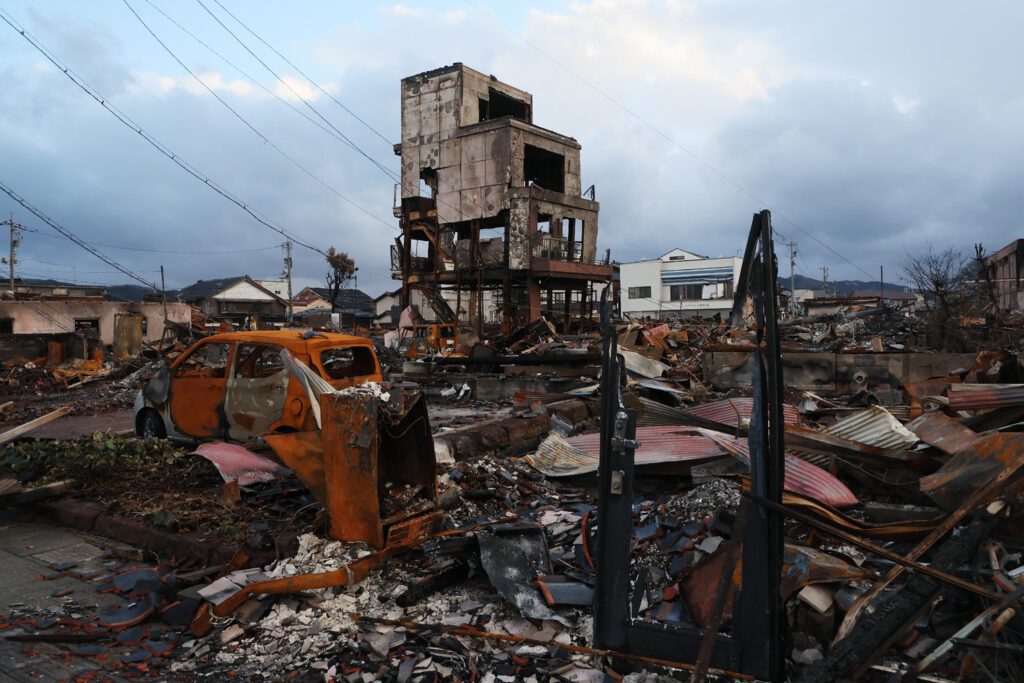
- ARAB NEWS
- 01 Aug 2025

SUZU, Ishikawa Pref.: Eight months after the Jan. 1 Noto Peninsula earthquake in central Japan, an increasing number of businesses in the region have resumed operations, backed by growing reconstruction demand and return home, to temporary housing, by local residents who had been evacuated.
Still, there is a long way to go before full-scale postdisaster reconstruction, with many businesses operating for shorter hours or at makeshift facilities.
The proportion of businesses that have resumed operations stood at 61 percent as of mid-August, up from 40 percent in early June, according to a survey of 533 companies conducted by the Suzu Chamber of Commerce and Industry in the city of Suzu in Ishikawa Prefecture.
Resumption of operations is progressing especially among civil engineering and construction companies, which play a pivotal role in postdisaster reconstruction, and services providers closely related to demand from residents, such as hair salons and medical facilities.
According to a survey by Kono Shinkin Bank in the Ishikawa town of Noto, 86 percent of its 672 client businesses in two cities and two towns in the Okunoto region in the prefecture restarted operations as of the end of July.
“The number is increasing thanks to the synergy effects from reconstruction demand, return home by local residents to temporary housing, and restoration of water supply,” an official of the bank said.
Asai, a “robatayaki” Japanese grill restaurant in Suzu, has been full of customers almost every day. The restaurant, however, now closes at 9 p.m., an hour earlier than before, due to a shortage of staff. In addition, local customers have yet to fully return.
“I hope that my store will play a role in helping people in Suzu go out and enjoy eating and drinking again,” Makoto Asai, the 49-year-old manager of the restaurant, said, stressing his eagerness to support the city’s reconstruction.
At the same time, he is worried how many local customers will come back. “I need to consider ways to keep my restaurant going while reconstruction demand continues.”
Referring to the business environment in disaster areas, Shuichi Tone, 72, head of the Suzu Chamber of Commerce and Industry, said, “The local population, which had been slowly decreasing, fell sharply in the wake of the earthquake.”
Even if businesses resume operations, they will be unable to keep going unless they have enough customers, he said.
Noting that the proportion of elderly people has exceeded 50 percent of the city’s overall population, Tone said that it is difficult for aged business owners to take out bank loans needed for resuming operations. The city faces an array of difficult challenges, Tone added.
In particular, the tourism industry, including hotels, has been struggling due to damage to facilities and a decrease in tourists, with only 40 pct of businesses in Suzu’s tourism sector having resumed operations.
Tone, who runs “Lamp no Yado,” a Japanese-style inn in Suzu, is exploring new ways to attract customers, such as utilizing changes in the topography of the Noto Peninsula caused by the New Year’s Day temblor as tourism resources, in cooperation with the Ishikawa prefectural government and travel agencies.
The 7.6-magnitude earthquake measured up to 7, the highest level on Japan’s seismic intensity scale.
JIJI Press